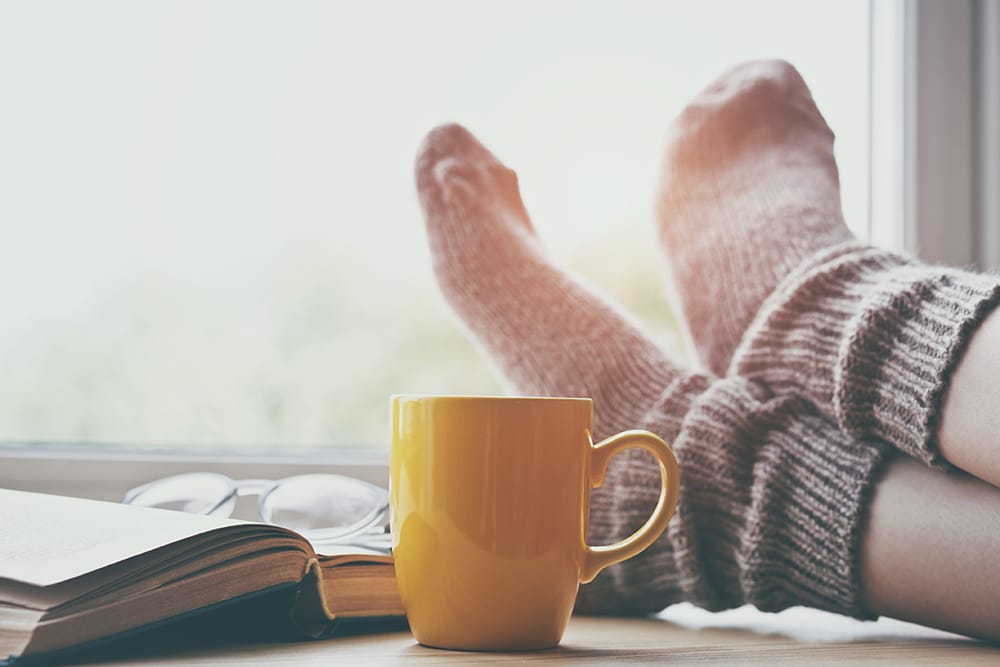As temperatures drop and days get shorter, it’s important that tenants take proactive steps to keep their homes warm, energy-efficient, and free from winter-related damage. While landlords are responsible for major repairs and maintenance, tenants play a vital role in caring for the property and preventing avoidable issues such as damp, mould, burst pipes, or heat loss that can arise during colder months.
Here are ten practical and effective things every tenant can do to optimise their rental property during the winter season.
1. Maintain Consistent Heating
One of the most effective ways to prevent mould and condensation is to maintain a steady temperature throughout the property. Rapid fluctuations, for example, turning the heating off completely during the day and then blasting it at night, can cause condensation to form on cold walls and windows.
Aim to keep your home at a minimum of 16–18°C, even when you’re out. If your property has a programmable thermostat or timer, set it so that the heating comes on for short periods throughout the day. This helps protect not only your comfort but also the building fabric and pipework.
2. Improve Air Circulation & Ventilation
Good airflow is essential to avoid dampness and mould. Even in winter, try to open windows for at least 10–15 minutes each day, particularly in bathrooms and kitchens where moisture builds up quickly.
Use extractor fans if fitted and keep air vents unblocked. Avoid drying clothes directly on radiators, as this increases humidity levels; instead, use a drying rack in a well-ventilated space. If condensation regularly appears on windows, wipe it away promptly to prevent mould from taking hold.
3. Report Maintenance Issues Early
Small problems can quickly escalate in winter conditions. Report any leaks, dripping taps, draughty windows, or broken heating equipment to your property manager at Haslams (or your landlord if your rental property is not managed by us) as soon as you notice them. Timely reporting not only helps ensure repairs are made quickly but also protects you from being held responsible for damage that worsens over time, such as a minor leak becoming a burst pipe or a small patch of mould spreading behind furniture.
4. Check & Bleed Radiators
Radiators that feel cold at the top but warm at the bottom may have trapped air, which stops them from heating efficiently. Bleeding radiators is simple and helps the heating system run more effectively, saving energy and reducing bills. Here’s how to bleed a radiator safely:
- Turn off the heating system and allow the radiators to cool for at least 30 minutes. Bleeding a radiator while it’s hot can be dangerous, as pressurised water or steam might escape.
- Gather the right tools. You’ll need a radiator key (available from most DIY stores) and a cloth or small bowl to catch any water that drips out.
- Locate the bleed valve, usually found at the top corner of the radiator. Insert the key into the valve and slowly turn it anti-clockwise (to the left). You should hear a hissing sound as trapped air escapes.
- Wait until water starts to flow steadily from the valve. This means all the trapped air has been released. Quickly turn the key clockwise (to the right) to close the valve again. Avoid over-tightening, as this could damage the fitting.
- Check the boiler pressure gauge afterwards. Bleeding radiators can sometimes cause the boiler’s water pressure to drop slightly. If it falls below the recommended level (usually around 1 to 1.5 bar when cold), you may need to top it up using the boiler’s filling loop. Check the boiler manual or contact your property manager at Haslams (or your landlord if your rental property is not managed by us) if you’re unsure how to do this safely.
- Turn the heating back on and check that the radiator now heats evenly from top to bottom.
Regularly checking and bleeding radiators, ideally at the start of winter and again mid-season, helps your heating system perform efficiently, reduces energy costs, and prevents cold spots in your home. If you notice ongoing problems, such as radiators that never heat up fully or unusual noises in the system, report them to your property manager, as the system may require professional servicing.
5. Prevent Frozen Pipes
Frozen pipes are one of the most common winter emergencies. To reduce the risk, make sure that pipes, especially those in lofts, garages, or external walls, are properly insulated. Many hardware stores sell inexpensive pipe lagging that can be easily fitted.
If you’re going away during a cold spell, don’t switch the heating off completely. Instead, leave it on a low setting or ask your property manager at Haslams (or your landlord if your rental property is not managed by us) whether you can safely shut off the water supply at the stopcock.
If you suspect a pipe is frozen, turn off the water supply immediately and contact us, your landlord, or a plumber before attempting to thaw it.
6. Reduce Draughts & Heat Loss
Simple, low-cost actions can make a big difference in keeping your home warmer. Check for gaps around doors, letterboxes, and windows, and use draught excluders or weather-stripping to seal them. Thick curtains or thermal blinds can also help retain heat, particularly in older properties with single glazing. Avoid blocking radiators with furniture, and close doors to unused rooms to contain warmth where it’s needed most.
7. Manage Moisture & Condensation
Condensation forms when warm air meets cold surfaces, which is a frequent problem in winter. To manage it, balance heating and ventilation: don’t overheat the property, but don’t allow it to get too cold either.
Wipe down cold surfaces, such as windowsills, regularly, and move furniture slightly away from external walls to allow air to circulate. Dehumidifiers can also be a great help in rooms that tend to stay damp, such as basements or bathrooms.
8. Keep Gutters, Drains & Outdoor Areas Clear
If your tenancy includes responsibility for garden or outdoor areas, take some time to clear leaves and debris from gutters, drains, and pathways. Blocked gutters can lead to overflowing water and damp patches inside the property, while slippery paths can become hazardous in freezing conditions.
Ensure that outdoor taps are turned off and insulated, and store garden furniture or equipment that could be damaged by frost or strong winds.
9. Test Smoke & Carbon Monoxide Alarms
Winter brings increased use of heating appliances, so it’s vital to ensure smoke and carbon monoxide alarms are working properly. Test each alarm monthly and replace batteries if necessary. If an alarm is missing, faulty, or not properly fitted, notify your property manager immediately.
10. Stay Energy Smart
Winter often brings higher energy bills, but simple changes can make a real difference. Use thermostatic radiator valves to control temperatures in individual rooms, and switch off lights and appliances when not in use. If your energy tariff allows, consider using major appliances like washing machines and dishwashers during off-peak hours to reduce your energy consumption.
In Summary
Taking small but consistent actions during winter not only keeps your living space comfortable and healthy but also helps prevent costly property damage. By maintaining steady heat, ensuring ventilation, and promptly reporting any maintenance issues, tenants can play an active role in protecting both their home and their deposit.
Winter can be tough on properties, but with a little care and attention, you can keep your home safe, warm, and in great condition until warmer times arrive.

